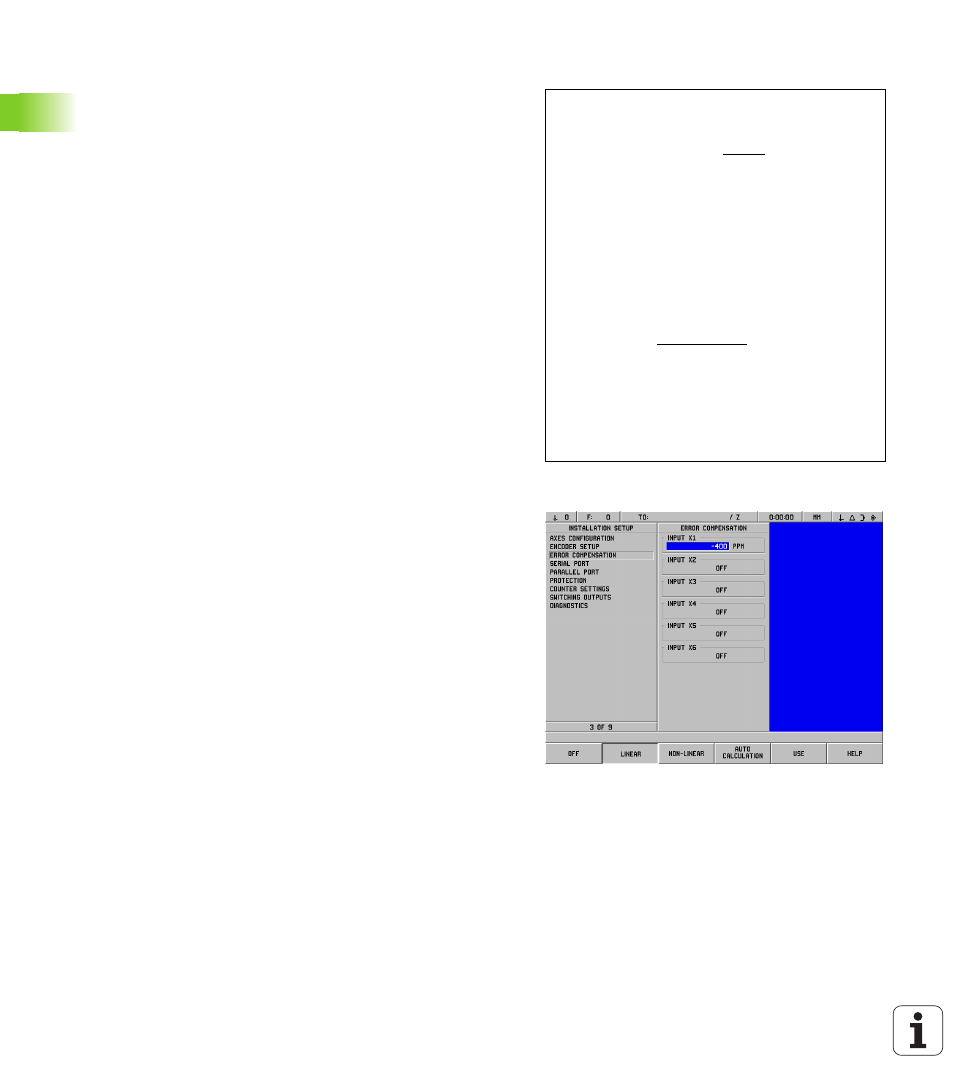Linear error compensation, Ii – 2 installation set u p – HEIDENHAIN PT 880 User Manual
Page 120

120
II Technical Information
II – 2 Installation Set
u
p
Linear Error Compensation
Linear error compensation can be applied, if the results of the
comparison with a reference standard show a linear deviation over the
whole measuring length. In this case the error can be compensated by
the calculation of a single correction factor. See Fig. II.11 & Fig. II.12
Direct Entry
8
If known, the encoder’s error information may be entered directly.
Press the LINEAR soft key.
8
Enter the compensation factor in parts per million (ppm) and press
the USE soft key.
Autocalculation
8
This option allows the operator to use gauge blocks to determine
the compensation factor.
8
Press the AUTOCALCULATION soft key. The ERROR INTERVAL form
will open.
8
Move the table to the first edge of the gauge block, and press the
START
soft key. The MEASURED field will reset to 0.
8
Move to the second edge of the gauge block. As the table is moved,
the MEASURED field will show the scale’s displacement from the
first edge.
8
Press the END soft key.
8
Enter the known gauge block size in the REFERENCE field. If the
block edges were approached from opposite directions, include the
diameter of the tool or feeler gauge stylus in the REFERENCE
VALUE field.
8
After entering the value, press the USE soft key to close the form.
The system will calculate the compensation factor.
Fig. II.11 Linear error comp., calculation formula
To calculate the linear error compensation use this
formula:
Correction factor LEC =
with
S = measured length with reference
standard
M =measured length with device at axis
Example
If the length of the standard you used is 500 mm
and the measured length along the X-axis is
499.95, then the LEC for the X-axis is 500 parts
per million (ppm).
LEC =
LEC = 500 ppm
(rounded to the nearest whole
number)
(
)
S – M
M
x 10
6
ppm
(
)
500 – 499.95
499.95
x 10
6
ppm
Fig. II.12 Linear error compensation form
